Basic definition
Wing basketball plays generally comprise offensive actions that could result in scoring opportunities from the wing areas and/or by way of typical wing players such as the shooting guard or small forward.
1-4 high
This section features a basketball play, initiated from the 1-4 high offense, that creates scoring opportunities from a wing player, also near one of the wing areas of the court.
Additionally, each of the offensive players on the diagrams below as well as subsequent diagrams are generally represented by the standard basketball positions, unless otherwise noted.
In essence, 1 is the point guard; 2 is the shooting guard; 3 is the small forward; 4 is the power forward; 5 is the center.
Part 1: Iverson cut
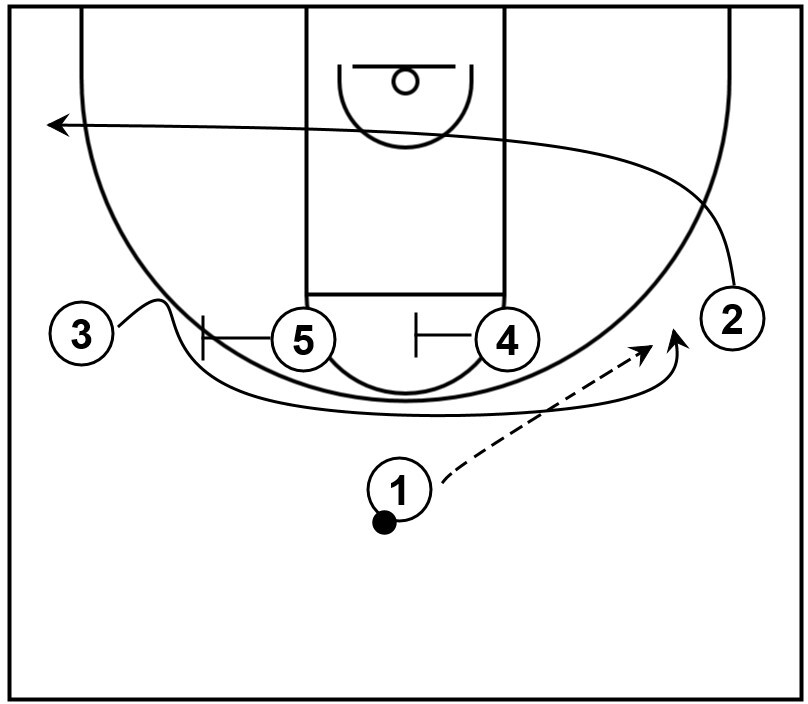
For the initial offensive setup: 1 is at the top in possession of the basketball, represented by the black dot; 2 and 3 occupy the right side and left side wing respectively; 4 and 5 fill the right side and left side high post elbow areas respectively.
To begin the action, 3 executes an Iverson cut from one wing on the left side to the opposite wing on the right side. 3 also gets open via a pair of screens set by 4 and 5 as well.
Moreover, as that Iverson cut action happens, 2 cuts across the lane from the right side wing to the left side corner.
From that point, 3 could receive the ball from 1, represented by the dotted arrow. Afterwards, 3 could possibly take the jump shot if that is open or dribble towards the baseline in an attempt to score via a layup or some other type of close-range shot.
Part 2: Back screen
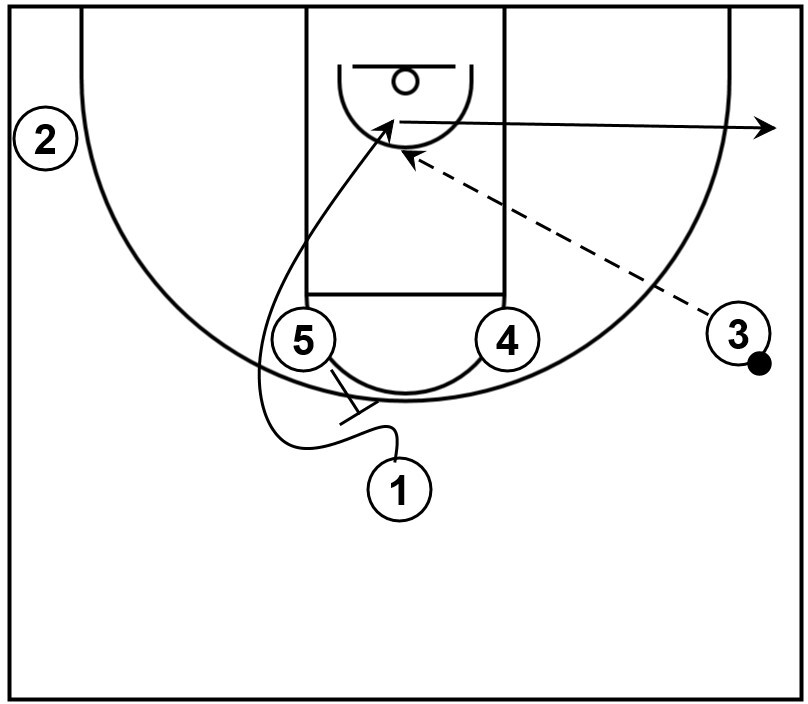
Moving on, if 3 does not shoot or drive, then 1 could cut to the basket via a back screen set by 5. Afterwards, 1 could receive the ball from 3 and potentially score by way of a layup.
Otherwise, if 1 does not receive the ball, then 1 could continue the cut through to the unfilled right side corner.
Part 3: Stagger screen
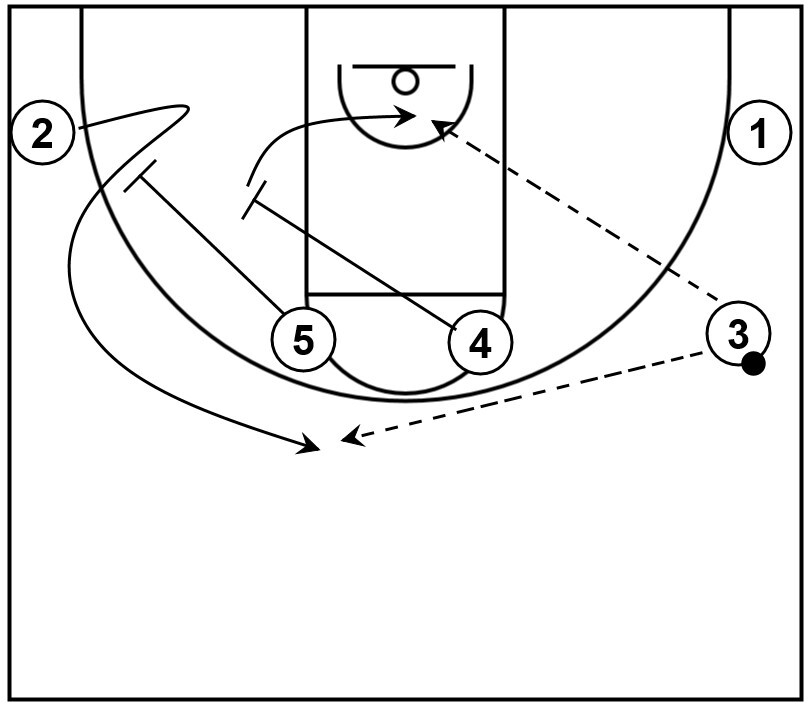
Next, 2 could cut towards the top area via the stagger screen set by 4 and 5. Afterwards, 2 could receive the ball and take the three-point shot if that is open.
Alternatively, 4 could slip the screen towards the rim, receive the ball from 3, and possibly score a field goal near the basket.
4 out 1 in
This section features a basketball play, initiated from the 4 out 1 in formation, that emphasizes scoring opportunities near the basket or around the perimeter, particularly for wing players.
Pass, cut, and screen away actions
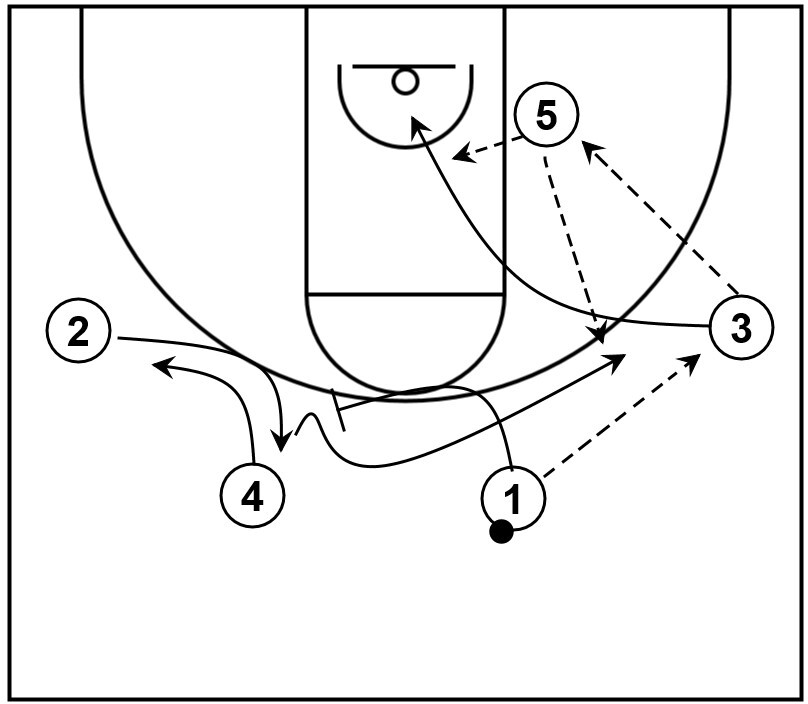
In terms of the initial setup: 1 and 4 occupy the right and left slot areas respectively; 2 and 3 fill the left and right wing areas respectively; 5 occupies the right side low post area.
To begin the play, 3 receives the ball from 1 while 2 and 4 interchange on the weak side, mainly to keep any defenders busy.
Next, 5 receives the ball via a post entry pass from 3 who also performs a Laker cut towards the rim.
As the post entry pass action occurs, 1 screens away, which gives 2 an opportunity to cut towards the vacant right side wing.
Following that, at least two scoring options could be available. Basically, 3 could receive the ball from 5 and score near the basket who cut to the basket. Alternatively, 2 could receive it and take the three-point shot if that is open.
5 out
This section includes a basketball play, initiated from the 5 out formation, that focusing on utilizing pass and screen away action to create scoring opportunities.
Part 1: Pass to wing and screen away
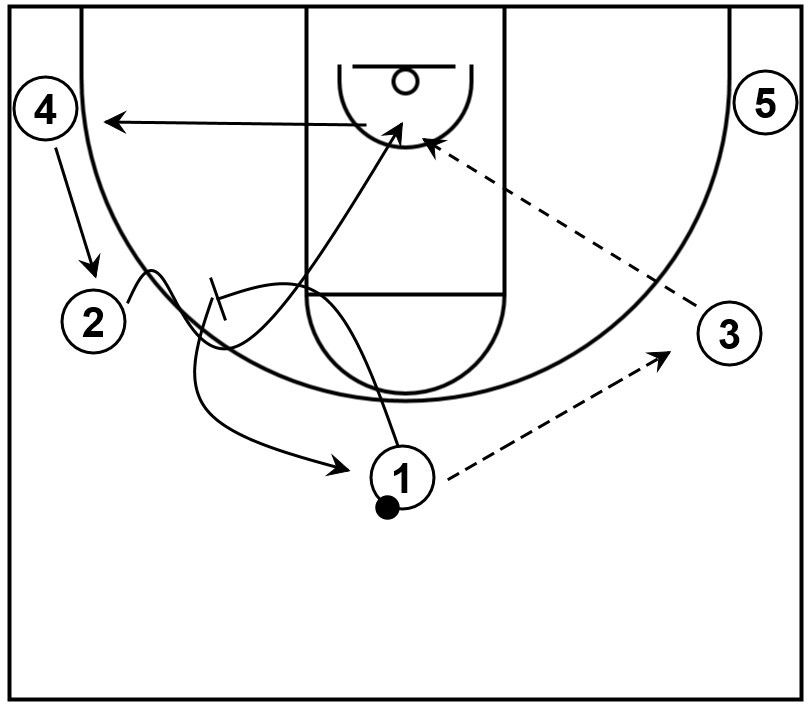
In relation to the initial setup: 1 is at the top in possession of the ball; 2 and 3 occupy the left side and right side wing areas respectively; 4 and 5 fill the left side and right side corner areas respectively.
To begin, 3 receives the ball from 1 and afterwards, 1 screens away between the left side wing and left side elbow area.
2 utilizes that screen and performs a curl cut towards the rim while 1 executes a self-replace back to the top area.
From there, 2 could receive the ball from 3 and score via a layup if that is open. Otherwise, 2 could cut towards the left side corner while 4 lifts up to fill the vacant left side wing area.
Part 2: Pass to top and screen away
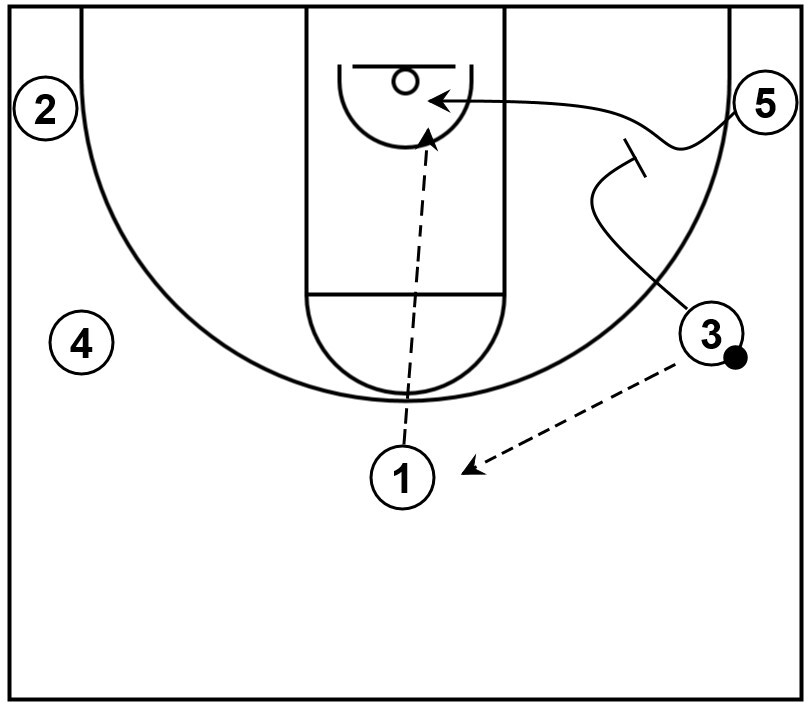
Continuing on, if 2 was not open to receive the ball, then 3 could pass it back to the top with 1 as the recipient.
Next, 3 could screen away near the right side corner. Afterwards, 5 could initially cut towards the screen as if to curl around it.
However, 5 could then reject the screen, cut straight to the basket, receive the ball from 1, and score via a layup or dunk at the rim.
Also, it is not shown on the diagram but this play could be implemented as a continuity offense to potentially generate additional scoring opportunities as well.
Essentially, after setting the away screen, 3 would self-replace back to the right side wing and then 5 would self-replace back to the right side corner.
Following that, 4 could receive the ball from 1 and screen away between the right side wing and elbow area.
After that occurs, 3 would utilize that screen, curl cut towards the basket looking for a scoring opportunity, and so on.